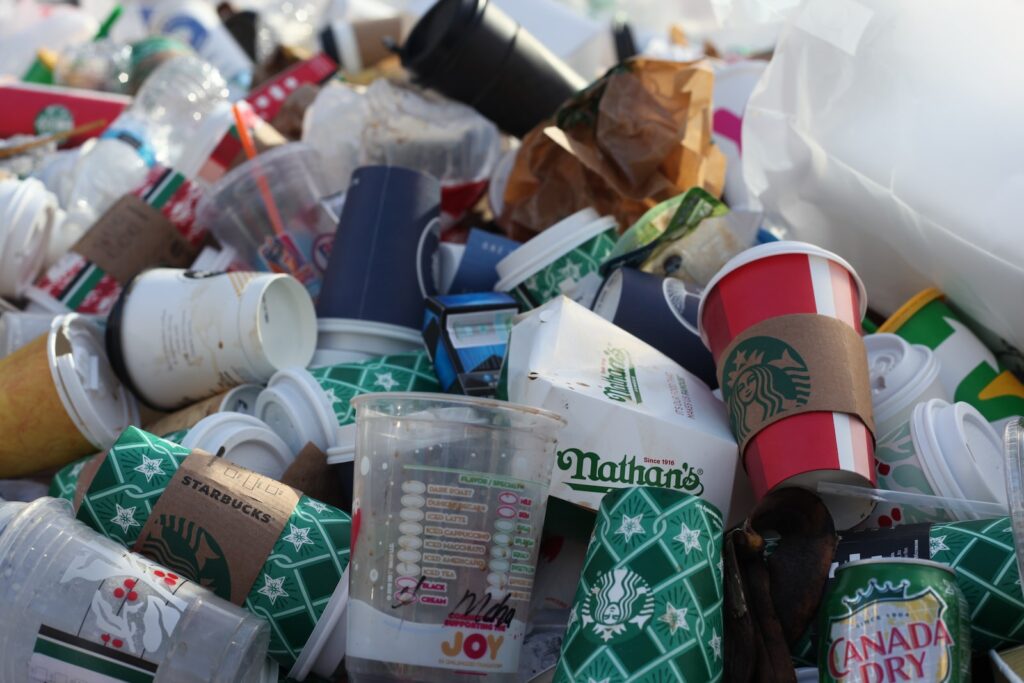Feature: How chemicals from plastic packaging are contaminating food
Jane Muncke, Managing Director and Chief Scientific Officer at the Food Packaging Forum (FPF), a not-for-profit foundation for science communication and scientific research, explains how chemicals are transmitted to food and beverages and how the packaging industry can become more sustainable.
Do we truly know what’s in our packaging? With around 100,000 unknown chemicals in packaging materials, and only 12,285 known by scientists, there are some fundamental questions which need answering.
Innate materials like glass reduce the risk of chemical migration, with only a few dozen chemicals present, and with the work of manufacturers like Encirc, it also offers a sustainable, safer choice for consumers. However, plastics, paper, and other materials often contain hundreds, if not thousands, of unknown chemicals that could have adverse side effects on both people and the planet. These form from impurities in those chemicals you start with, which react, creating up to 15 further un-intended chemicals which can further react.
What’s in our food matters, and a lot of scientific and regulatory effort goes into ensuring that it doesn’t contain anything that could be harmful to our health. However, the same level of thought sometimes isn’t given to the packaging that contains it. Perhaps this is because we’re so used to it being something that protects our food and so don’t consider it a source of contamination. This needs to change.
The cost of complexity
The Food Packaging Forum (FPF) communicates knowledge on the effects food packaging can have on food, informing stakeholders across the lifecycle of food products of the latest developments. One of the primary goals of the FPF’s Food Contact Chemicals and Human Health Project is to track ‘chemical migration’ – the movement of chemicals from packaging materials into food. It’s a broad term and it needs to be considered across the entire supply chain. We’re constantly demanding more from our food packaging, more durability, more functionality and more sustainability, and this means more complex manufacturing processes.

When we increase the amount and diversity of chemicals used in manufacturing, impurities in these chemicals and unintended by-reactions which take place in the process cause more chemical migration. This relationship will continue to be significant as long as we favour complex, chemical-heavy materials over simpler ones which emit fewer chemicals such as glass. Alarmingly, researchers have now identified 12,285 chemicals in packaging materials used today, and there are another 100,000 which remain unknown. The scale of the issue and the paucity of insight into the nature and origin of these chemicals sits in sharp contrast to a food industry subject to tight quality controls. How would we feel if, when asking what was in our food, came the response ‘we don’t know’?
The tip of the iceberg
We created the Food Contact Chemicals Database (FCCdb) to track and identify chemicals used to make food packaging and have highlighted 608 as requiring further assessment and substitution for safer alternatives. Establishing a public knowledge base on which manufacturers, regulators and consumers can make informed decisions is the beginning of our proactive strategy to prevent the migration of harmful chemicals, but the FCCdb is limited to the chemicals we’re aware of and which are intentionally used in the manufacturing process.
To build a more comprehensive picture of chemical migration beyond the ones we put there intentionally, we’ve constructed the Database on Migrating and Extractable Food Contact Chemicals (it’s a bit of a mouthful so it’s known as FCCmigex for short). The systematic literature search used to compile the database and identify the chemicals showed that only one-third of the compounds found were previously known to be used in the manufacturing of food contact materials. Not knowing where the other two-thirds come from, or at what stage they were introduced, presents a substantial barrier to remedying the situation.
Press coverage centres on the potential long-term health effects of chemicals we can identify, but the problem is data on these simply isn’t there yet. The Guardian emphasises just how much of an issue the knowledge gap poses in their reporting. Regulation requires certainty, and it’s in search of this certainty that the Food Packaging Forum is going next. We’re currently in the process of gathering information for another database on the smaller number of chemicals for which we do have empirical data and tracking the course of those chemicals from food packaging into people.
 The databases are a start; they can help us to better understand how manufacturing processes affect the final product and increased awareness will help us to eliminate contamination. But are we just kicking the plastic bottle further down the road? Our constant reengineering of these materials – even with the intention of making them more sustainable – only engenders more potential for chemical migration and creates bigger problems to solve in the future. Most pressing are the effects on health that these chemicals can have, most of which are still unknown. Microplastics have been found in the lungs and blood of living people and the placentas of unborn babies; it would be naïve to think that a similar investigation wouldn’t also find food contact chemicals. Compounds such as perfluoroalkyl and polyfluoroalkyl substances (PFAS) have also been found in food, which have been linked to various serious health conditions including cancer, liver damage and developmental issues.
The databases are a start; they can help us to better understand how manufacturing processes affect the final product and increased awareness will help us to eliminate contamination. But are we just kicking the plastic bottle further down the road? Our constant reengineering of these materials – even with the intention of making them more sustainable – only engenders more potential for chemical migration and creates bigger problems to solve in the future. Most pressing are the effects on health that these chemicals can have, most of which are still unknown. Microplastics have been found in the lungs and blood of living people and the placentas of unborn babies; it would be naïve to think that a similar investigation wouldn’t also find food contact chemicals. Compounds such as perfluoroalkyl and polyfluoroalkyl substances (PFAS) have also been found in food, which have been linked to various serious health conditions including cancer, liver damage and developmental issues.
An alternative solution
Moving away from materials with a high tendency for chemical migration such as plastic to more inert ones like glass will help break this vicious cycle. Inert materials don’t react with their environment. In the case of glass, the silicon dioxide molecules which make up most of the glass we’re familiar with have very strong bonds between them, meaning they do not react with most substances and so don’t release chemicals. It’s time to think about whether striving to make more complex packaging materials sustainable is worth it, when simpler, safer ones are readily available, like glass, and are already environmentally responsible. It’s easy to prioritise inert materials when designing food packaging.
Manufacturers like Encirc are at the centre of this, producing and championing the material’s sustainability and health benefits.
There are promising signs of progress in other areas of the industry too. SPHERE, a new sustainable packaging framework, includes Chemicals of Concern as a metric and recommends using the Understanding Packaging Scorecard co-created by the FPF and our partners. We need to expand how we evaluate the performance of our packaging; the Scorecard is a guide to moving away from carbon tunnel vision to a holistic assessment of all the impacts our packaging has. Frank interrogation will help us to think bigger about packaging solutions that don’t involve increasingly complex manufacturing processes with more chemical migration.
Creating a circular economy
One way forward would be to move away from linear manufacturing processes and prioritise packaging materials which can be re-used without needing to be recycled into a completely new form. The food and drink packaging industry lends itself well to circular business processes – containers made of inert materials could be returned and re-used, meaning no emissions from disposal and fewer containers produced overall. Embracing the circular economy equally means an evolution of the role of manufacturers. A unique property of glass is that tamper-proof digital identification codes can be etched on during production. As a consequence, individual products can be traced right back to their sources; manufacturers can no longer wash their hands of a product once it leaves the factory. Responsibility for the impacts of these products no longer begins at the cradle and ends at the gate, it’s time to go cradle-to-cradle.
Creating a circular economy isn’t a new goal, especially in the manufacturing industry, but the drive behind efforts to achieve it has primarily had net zero in its sights. Concerns over the health effects of food contact chemicals are yet to become major voices in this sector, partly due to there being a vast number of different chemicals involved and the diversity of the potential health effects.
But this still requires stakeholders to work proactively to address food contact chemicals. With this in mind, we’re trying to make the links between the chemicals that migrate from packaging into food, the ones found in people, and the resulting health effects undeniable. We want to present these links in a manner that is accessible to stakeholders and consumers across the sector. The FPF is constantly working to bridge the gap between science and policy in this area and mobilise regulatory power behind a public health issue of which we could lose control if we remain unwilling to face the damage it causes now and future consequences of inaction.
One of the first things we learn as children is that food can be healthy or unhealthy, and as adults, we have various methods of measuring just where on that scale foods fall – it’s second nature. The purpose of the Food Packaging Forum is to champion this understanding of food packaging; it is part of our food, and it can be unhealthy for both our planet and the people on it. First, we need to know more, about what’s in our packaging, how it was made, and how it affects our health. When we’ve got the full picture, we can make fundamental changes to how we choose materials and processes, rather than chase incremental improvements which mean bigger challenges in the future. Let’s start eating and drinking more healthily, in every way.
Photo by Jasmin Sessler, Elena Rabkina and Ronise Daluz













